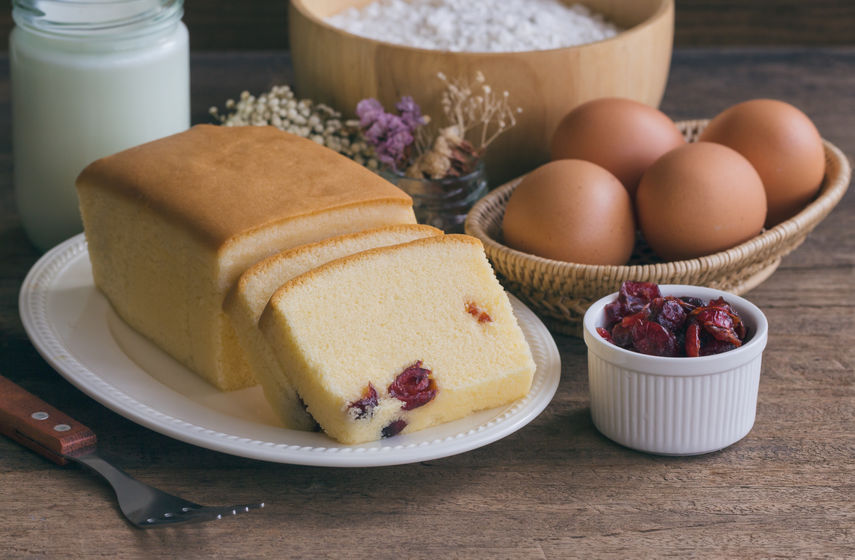
There are few things better than a freshly baked cake, especially when it is deliciously light and fluffy.
If you’re looking for the secrets to more delicious cakes that will impress friends and family, we’ve got the best tips to help.
Learn what makes a cake light and fluffy with these five essential baking secrets.
1: Cream Your Butter and Sugar
Cream the butter and sugar ingredients of your cake and the entire mixture will become lighter and fluffier.
Creaming butter and sugar involve whisking rapidly, or you can even use a handheld mixer to make things quicker.
You’ll know when the mixture is ready because it will be bubbly and fully incorporated with no trace of hard sugar granules.
Any handheld electric whisk will save time, like this Electric Hand Mixer from Toogel Store.
2: Fold Your Cake Batter
Stand mixers make it easier to prepare the cake batter, but they also make denser cakes.
If you want the fluffiest and most delicate cake you’ve ever had, you will need to fold your cake batter by hand.
Use a nonstick spatula to continually turn over your cake batter, cut it, and turn it again.
Folding helps to trap air pockets while still thoroughly mixing all ingredients.
Once you’ve tried a folded cake, you’ll find it hard to go back to your automatic mixer for similar recipes.
Silicone utensils are best for folding your cake batter.
This Country Kitchen Nonstick Silicone Baking Utensil Set is perfect if need new kitchen tools.
3: Get Your Ingredients Up to Room Temperature
Incorporating cold ingredients while preparing your cake batter can interfere with the chemical reactions necessary for the perfect texture.
This can lead to clumps in dry ingredients and a denser cake that may not be as enjoyable to eat.
To avoid this, it’s crucial to set aside any refrigerated ingredients well in advance and allow them to reach room temperature before baking.
This is a vital step in achieving a light and fluffy cake.
This process involves resting ingredients such as eggs, butter, milk, and water before incorporating them into the batter.
Taking the time to follow this step will lead to a cake that’s not only delicious but also perfectly textured.
4: Substitute Some Liquid for Buttermilk
If your recipe calls for milk or water, try using buttermilk instead.
Buttermilk is a mildly acidic ingredient that will help to break down the gluten in cooking flour.
It reduces the density of the cake allowing more space for air.
This allows for a much lighter and fluffier cake that will be delicate to the last bite.
You can use shelf-stable powdered buttermilk for your cakes at home.
You only need to mix the powder with water and you’ll be ready to go with any recipe.
Powdered buttermilk can also be used for powdered cake mix recipes. Try this Hoosier Hill Farm Buttermilk Powder.
5: Use Cake Flour
All-purpose flour works fine in a cake, but the result will be much denser than if you use specific cake flour.
Cake flour is formulated to result in light and spongy cakes with the perfect amount of moisture.
Even if a recipe calls for all-purpose flour, you can use cake flour instead.
The ratios will be identical so there are no other modifications needed in the recipe.
Try this Pillsbury Cake Flour. It’s a staple in American kitchens.
Your Friends and Family Will Love Your Light and Fluffy Cakes

Now that you understand the crucial elements of achieving a light and fluffy cake, you’re ready to take your baking game to the next level and make your best cakes ever.
The great news is that you can continue using the recipes you already love and enhance them with some simple techniques.
By allowing refrigerated ingredients such as eggs, butter, milk, and water to come to room temperature before baking, you’ll ensure that your cake has the perfect texture and is delightfully fluffy.
However, if you ever desire a denser cake with more volume and bite for specific recipes, you can always revert to your traditional methods.
The key is to understand the importance of each step in the process and experiment with different techniques to achieve the desired outcome.
So, let’s get started on creating delicious cakes that are not only visually appealing but also perfectly textured and delightfully fluffy.


